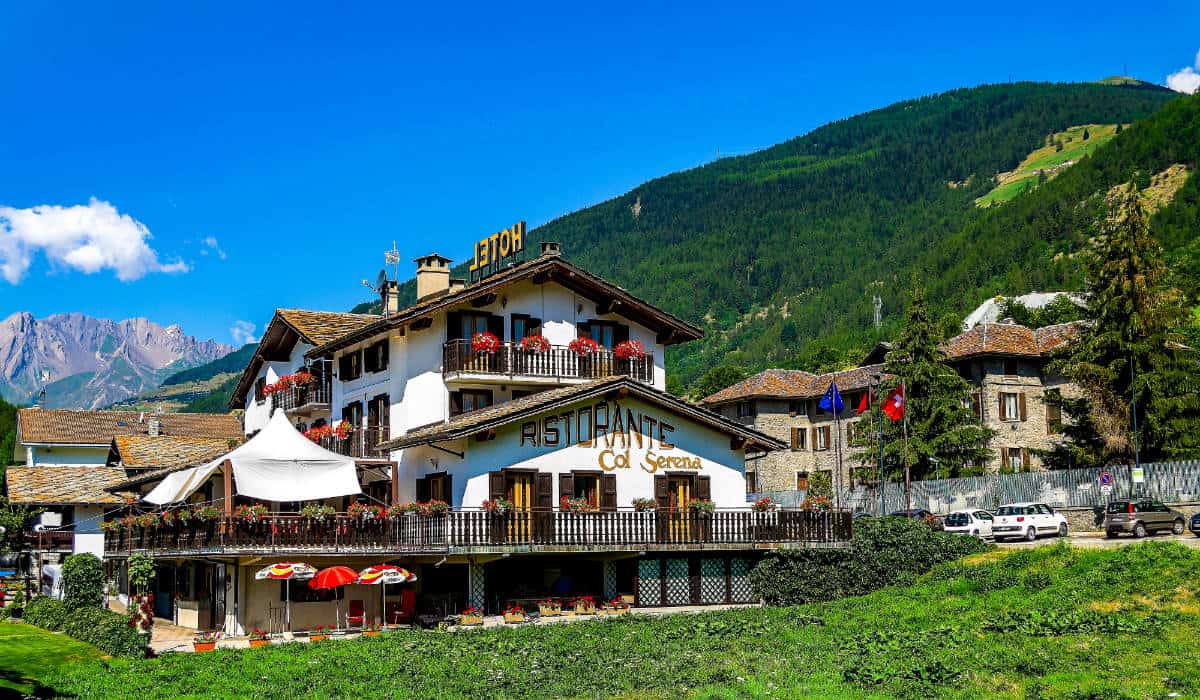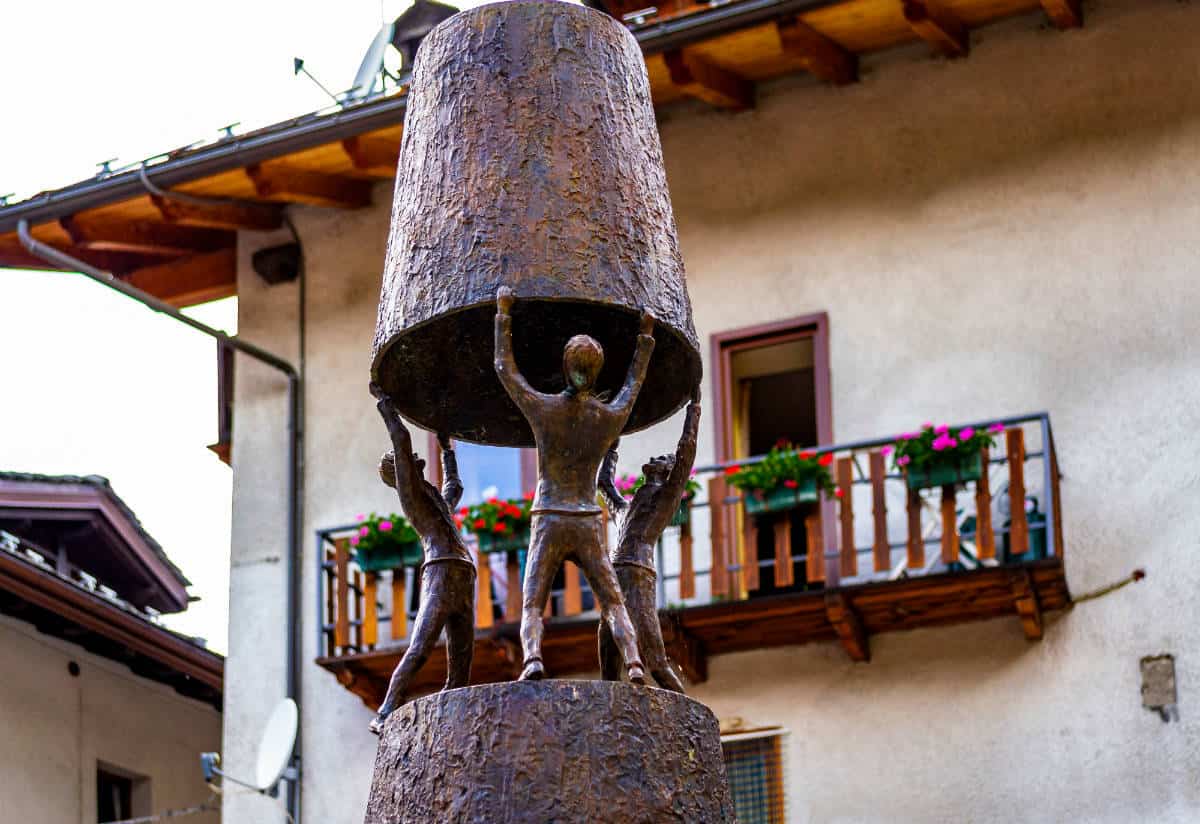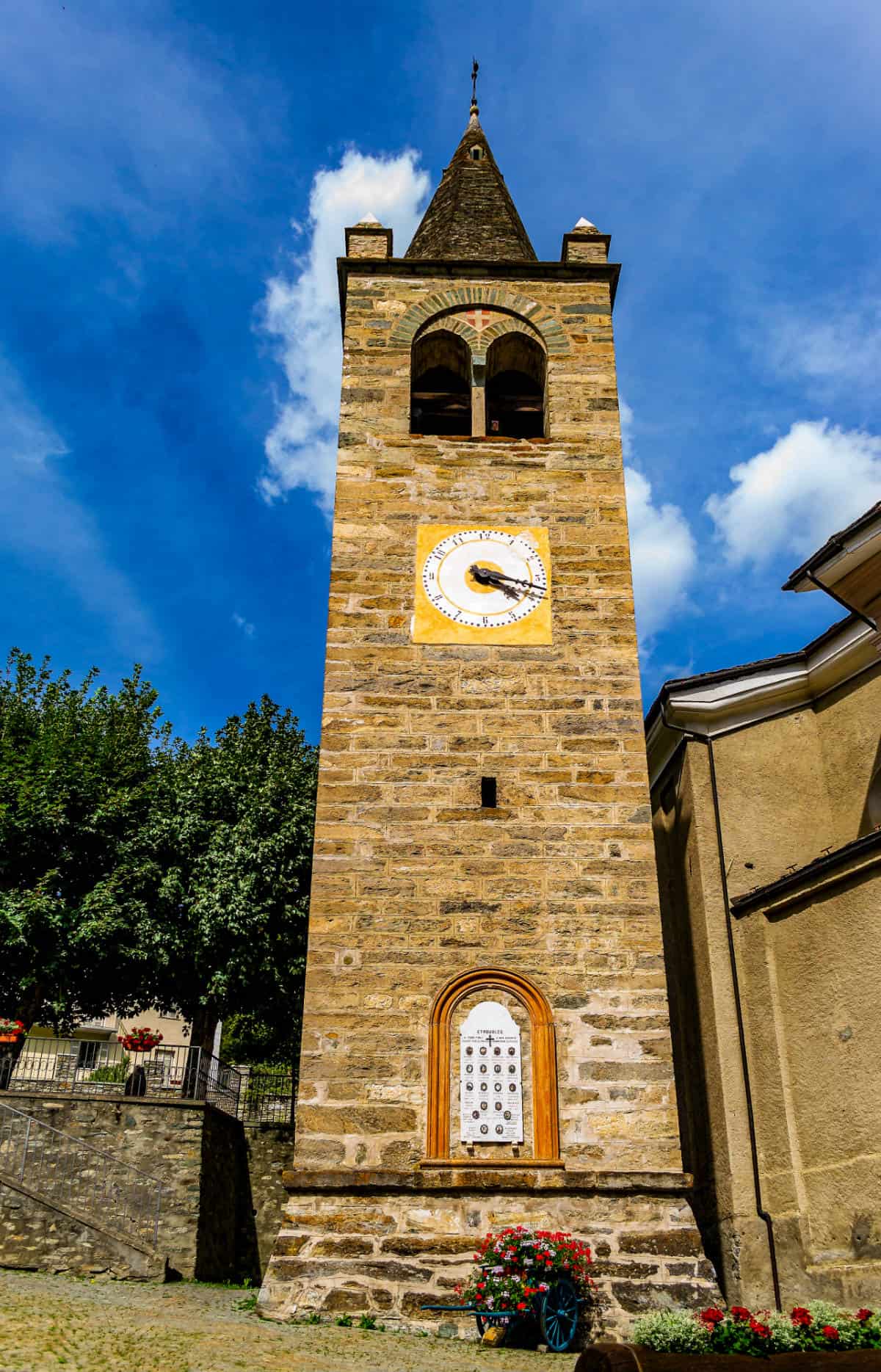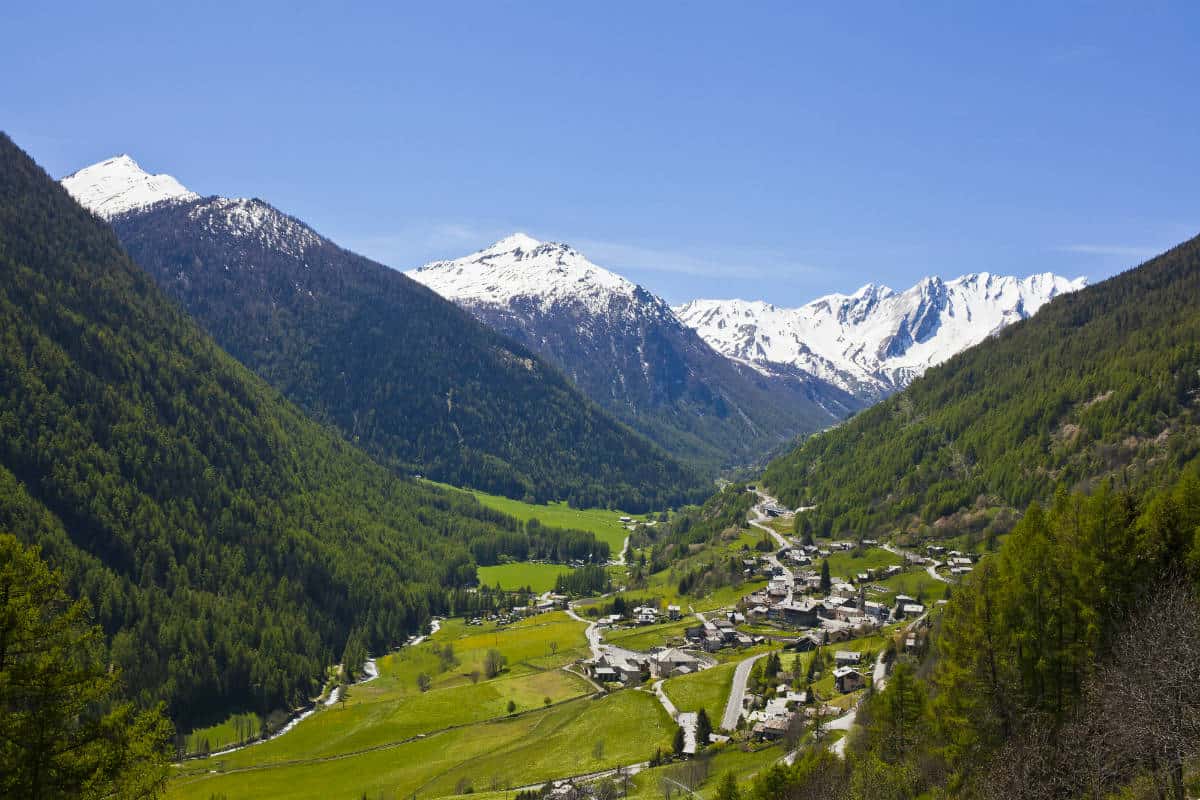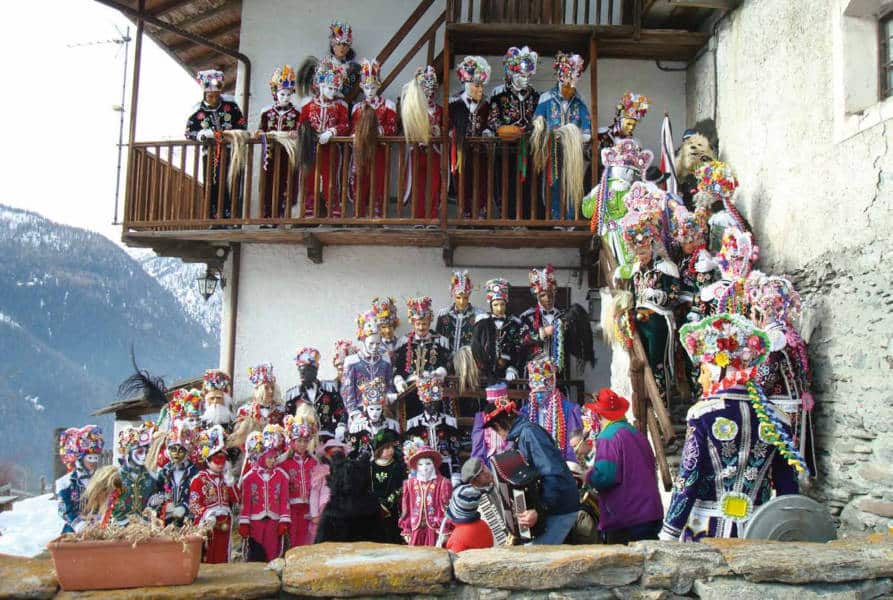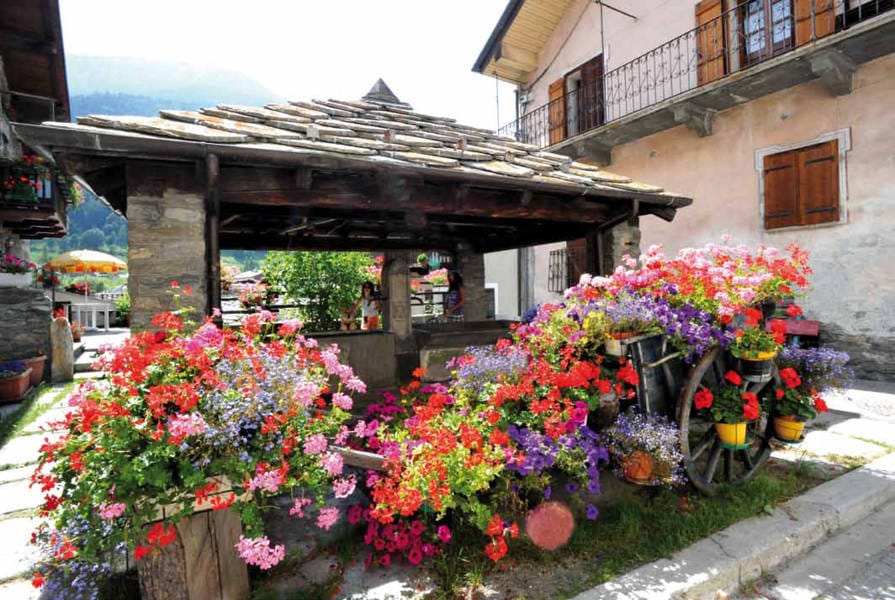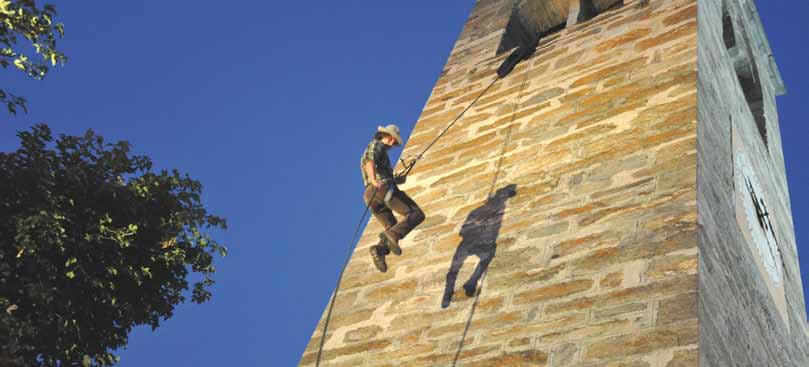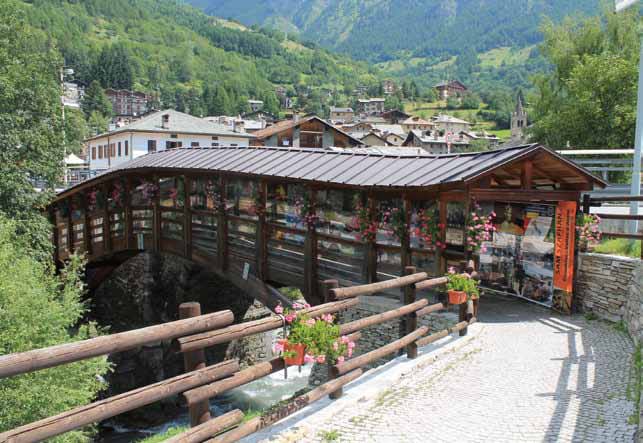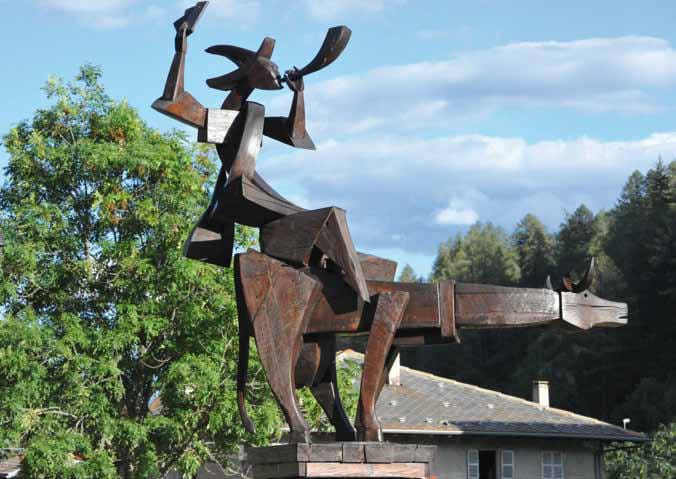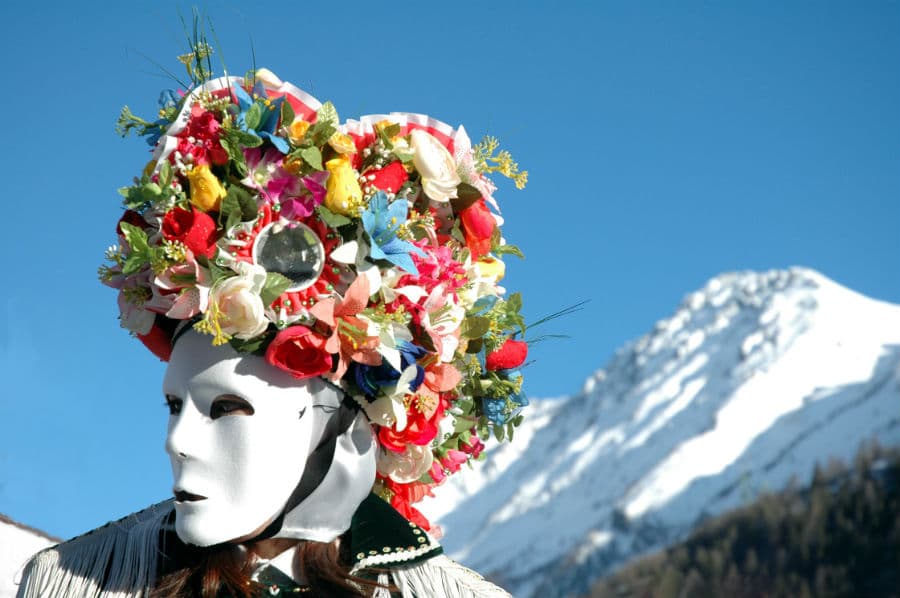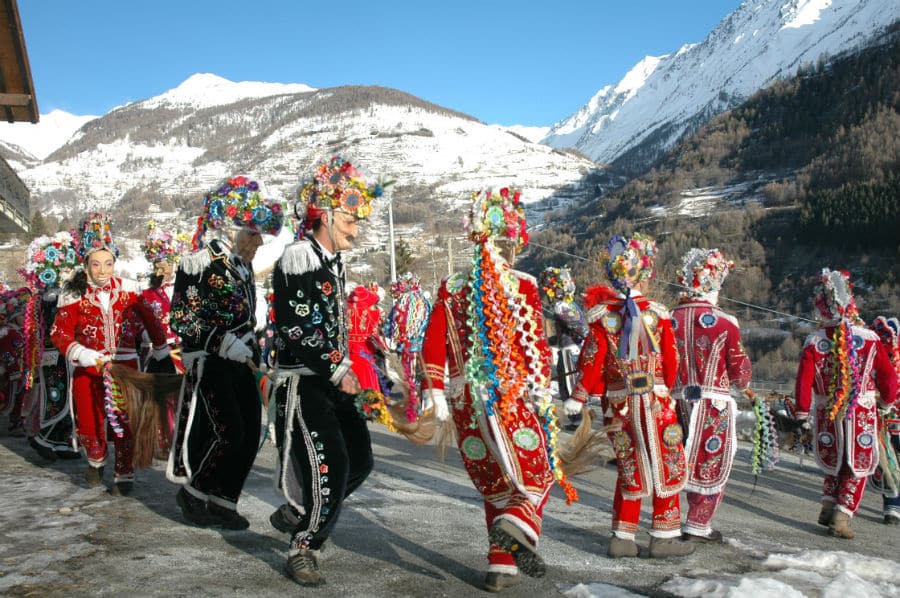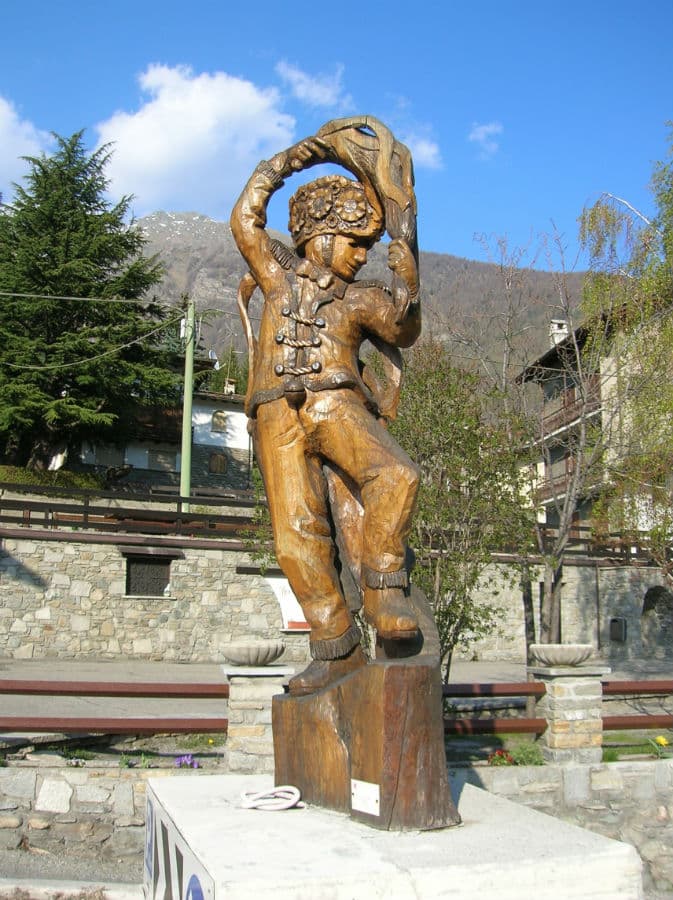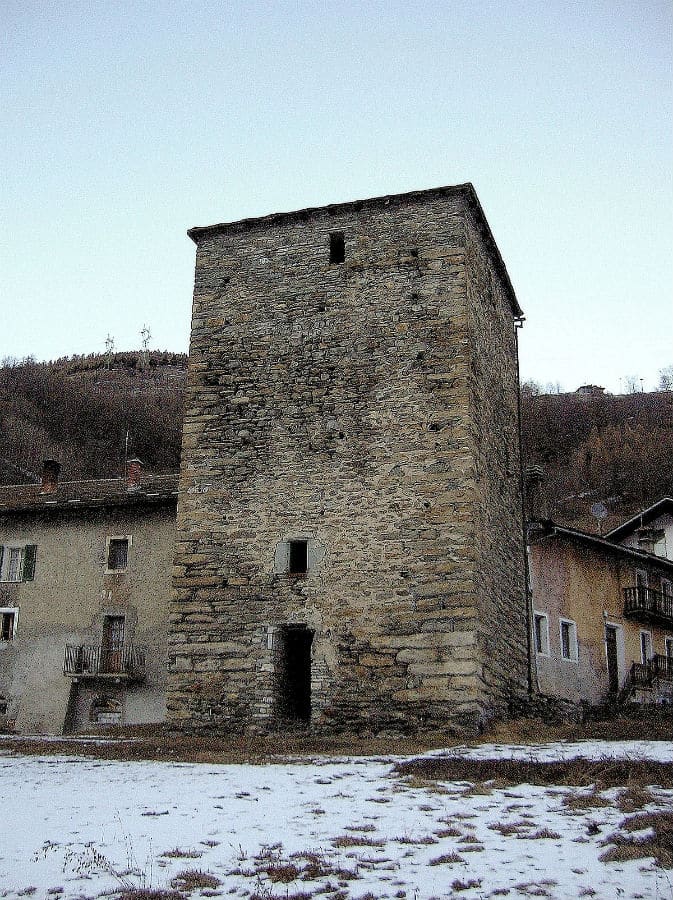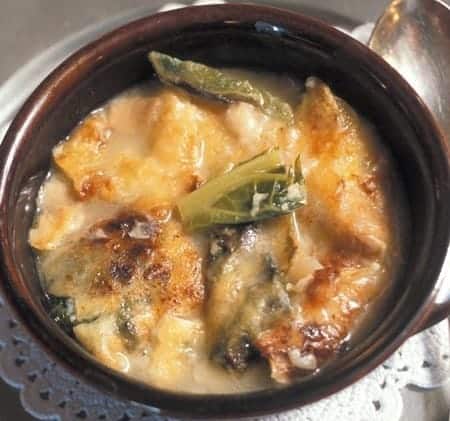The toponym Etroubles derives from the Valdostane dialect Étrobbla, that indicates the stubble, straw to the root of cereals such as wheat, oats and barley. In Roman times had the name of Restapolis, because it is located on the transit route for the Colle del Gran San Bernardo. In the medieval era Étroubles found himself to be one of the countries along the Via Francigena. In the hamlet of Vachéry since the Middle Ages rises an important tower, said Tour de la Vachère: it was built in the XII century on Roman foundations. From Borgo, climbing for Vachéry meets the first turnaria dairy of the Aosta Valley, dating back to 1853.
At the carnival, is of great interest to the parade of Landzette, traditional masks of Coumba Freida. These masks are inspired to the currency of the Napoleonic troops, which sowed terror to their passage in May 1800. To exorcise this event, the population of the Coumba Freida, zone of Valpelline and the valley of the Gran San Bernardo has developed over the centuries is a colorful parody of military uniforms of the era, and the day of the carnival along all the municipalities of the two valleys in an extremely noisy and festive.
Particular attention should be paid to the medieval village, now museum under the open sky with the opening of the exhibition "À Étroubles, avant Toi sont passés…", a permanent art gallery with works of world famous artists where to spend some hours in freedom between the old streets in cobblestones, discovering the beautiful fountains from which gushes out cool water coming from Mont Vélan, of ancient dwellings recently refurbished in local stone with roofs of lose, the huge fifteenth-century bell-tower from which scoccano the hours and the nineteenth-century church with beautiful frescoes.


